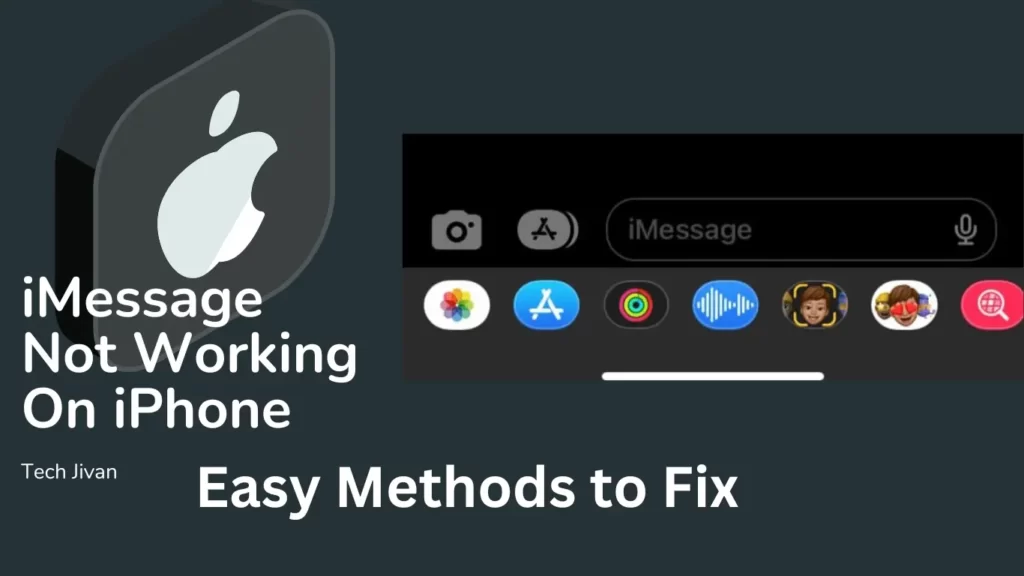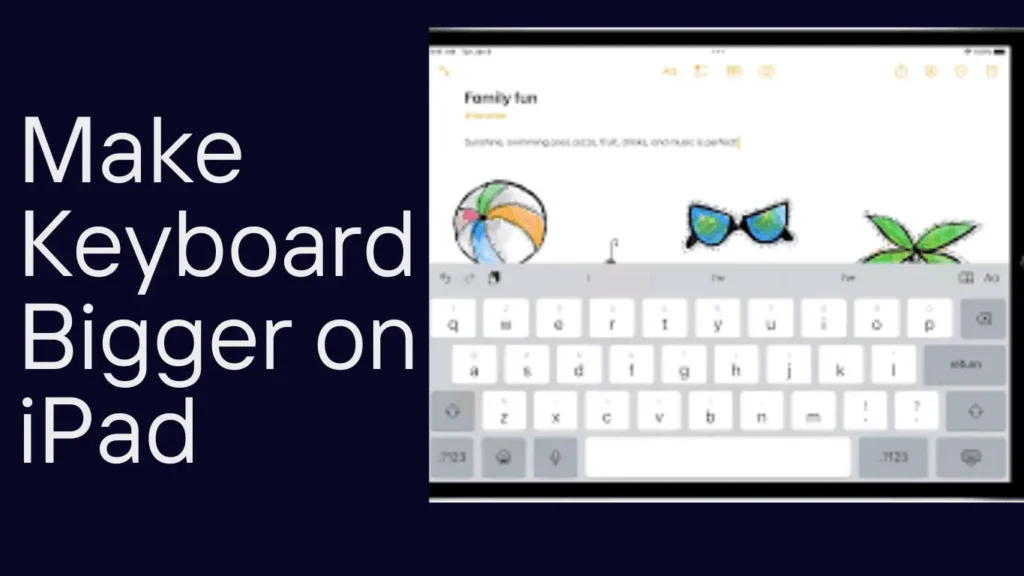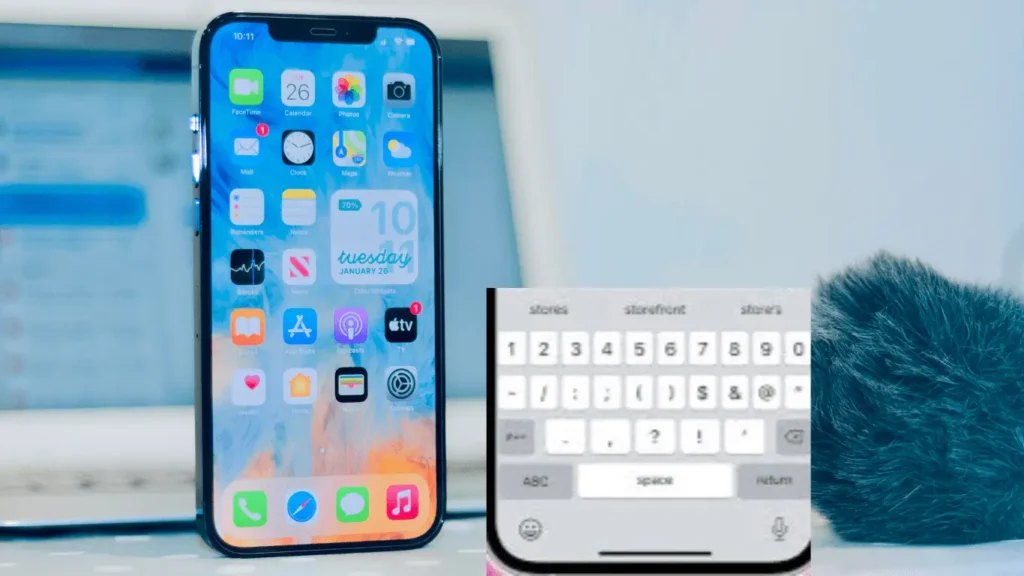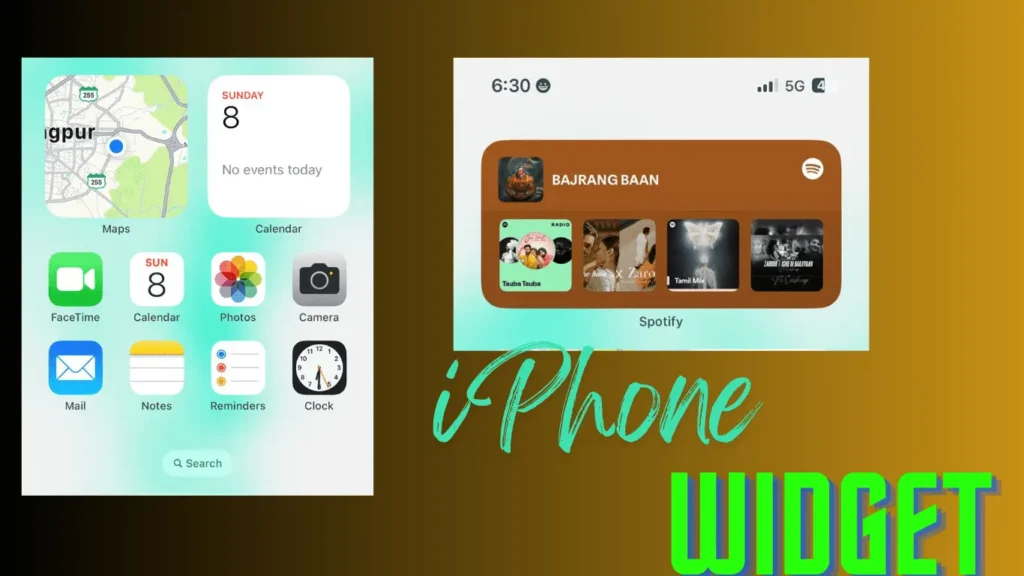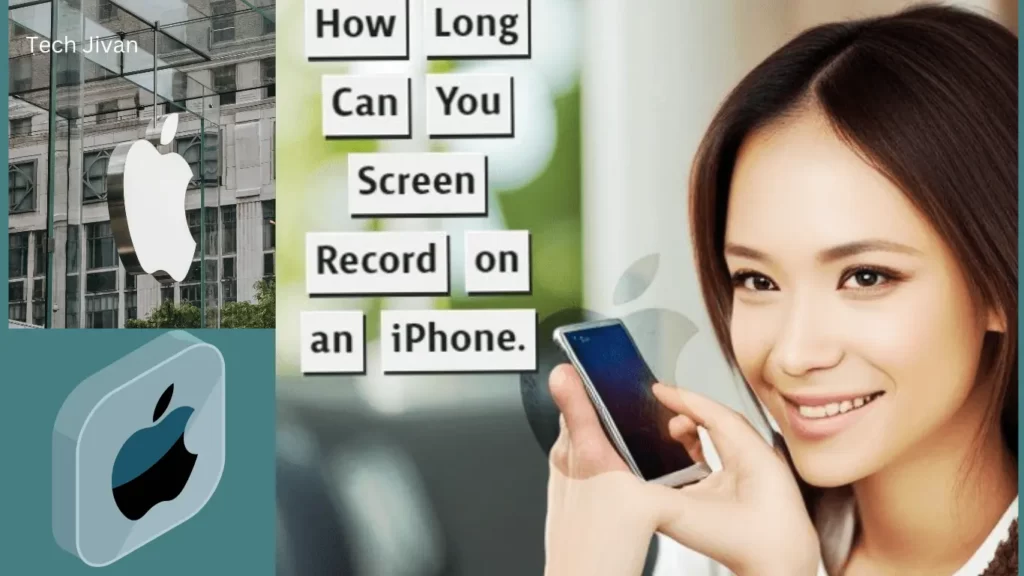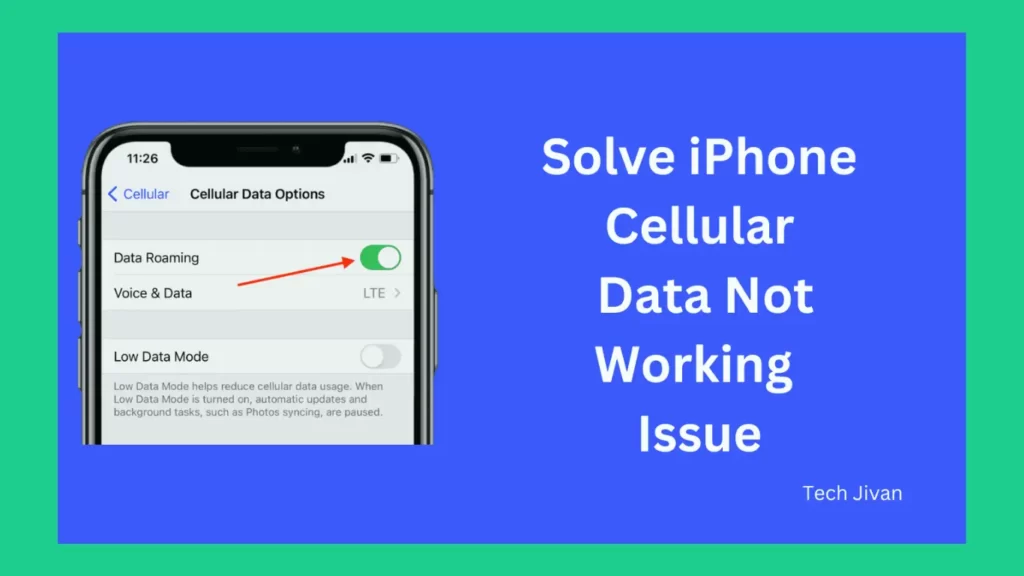
Individuals who are struggling with their iPhone cellular data not working issue. As well as, dealing with internet, call, and message issues on the go is frustrating.
Then don’t worry! In this post, we’ll outline possible reasons for this problem and provide practical solutions to get your cellular data up and running.
Read this post till the end for the best fixes to resolve the issue. So without any further delay, let’s get started.
Table of Contents
What Is The Reason Behind iPhone Cellular Data Not Working Issue?
The issue of iPhone cellular data not working can stem from various reasons. These include:
- Weak signal strength.
- Limited coverage.
- Software glitches.
- Physical problems with the device or SIM card.
- Oversight in enabling cellular data or Disabling Airplane Mode.
- And Potential software updates.
Identifying the specific cause is crucial to address the problem and restore cellular data functionality effectively.
Once you identify the reason, solve the issue with the help of the fixes given in the next section.
Here’s The Fixes For iPhone Cellular Data Not Working Issue
Activate Or Deactivate Mobile Data
To manage cellular data on your iPhone, ensure it’s enabled.
Step 1: If you encounter connectivity issues, consider toggling it off and on in the Control Center or Settings.
Step 2: Access Control Center, tap the mobile data icon and wait briefly before reactivating it.
Step 3: Alternatively, navigate to Settings, choose Cellular, and switch off Mobile Data before switching it back on.
That’s it; These steps can help resolve potential connectivity bugs and ensure a smooth internet connection.
Valid Data Plan Required
Confirming a functional data plan is crucial. Despite your iPhone’s smooth operation, your data plan could expire or be depleted.
To ensure a valid data allowance, contact your carrier’s customer support. They can provide your data balance and assist in topping up if necessary.
Stay connected by keeping your data plan up to date.
Confirm Your Network Range
Sometimes there are errors caused by weak internet coverage. To assess coverage, monitor the signal strength displayed by network bars in the Control Center.
The absence of bars implies no cellular network; relocate to find signals.
While traveling, “Mobile Network Unavailable” might appear. Stay within your carrier’s coverage for internet access.
Consider enabling data roaming for consistent internet connectivity on the move.
Read Also: Best Smartwatches for Men in 2023
Make Sure That The Usage Of Mobile Data Is Not Limited.
If you’ve unintentionally limited cellular data on your iPhone to control usage, you can reverse it to regain access. To do this, follow the steps given below:
Step 1: Open Settings and navigate to Screen Time.
Step 2: Choose Content & Privacy Restrictions.
Step 3: Tap on Cellular Data Changes.
Step 4: Enter your passcode if prompted.
Step 5: Opt for the “Allow” option.
Remember, certain apps might lack cellular data access. If you encounter this issue, verify that you’ve granted the necessary permissions for those specific apps.
This will help resolve the iPhone cellular data malfunctioning incorrectly for particular applications.
Disable Wi-Fi And Wi-Fi Calling
To optimize your iPhone’s performance, Consider disabling Wi-Fi and Wi-Fi Calling.
While Wi-Fi Calling provides clear call quality by utilizing strong Wi-Fi networks, it could disrupt cellular data usage.
To prevent this, turning off both features is recommended. You can easily deactivate Wi-Fi through the Control Center for a seamless experience.
Turn Airplane Mode On Or Off
Toggling Airplane mode is a valuable method for network refreshing, as it deactivates wireless connections. To do this, follow the steps:
Step 1: Open the Control Center and tap the Airplane icon.
Step 2: After waiting for about 10 seconds, tap the same icon again to disable Airplane mode and reactivate wireless connections.
That’s it! This simple trick can help resolve connectivity issues and enhance network performance.
Carrier Update OR Software Update
Ensure you stay ahead of mobile data issues on your iPhone by regularly updating your carrier settings
If network connectivity problems arise, Apple might prompt your carrier to send a software update to fix the bugs. Here are the steps:
Step 1: Firstly, keep an eye out for carrier updates. Navigate to Settings > General > About.
Step 2: If a carrier update is ready, a “Carrier Settings Update” popup will appear.
Step 3: Tap Update to proceed.
If cellular data problems persist, explore additional solutions.
Another option is to look for software updates for your device.
Step 1: Visit Settings > General > Software Update (connect to Wi-Fi as the internet is needed)
Step 2: Install any available system updates to keep your device current.
Read Also: Impact Of Artificial Intelligence In Everyday Life
Take Out Your SIM Card And Then Put It Back In.
If you’re experiencing connectivity problems with your iPhone, notably the iPhone 13 series and earlier models with a physical SIM slot, one solution is to address the SIM card.
Sometimes, the SIM card can become misaligned or accumulate dust, leading to issues. To resolve this, consider these steps:
Step 1: Firstly, Power off your device.
Step 2: Then, remove the SIM card from its tray.
Step 3: Gently clean the SIM card with a microfiber cloth.
Step 4: Reinsert the SIM card into the tray. Power on your device.
However, if you’re encountering difficulties with a new SIM card or haven’t been able to connect to cellular data, it’s advisable to contact your carrier.
They can offer assistance and determine whether your phone is supported or if there’s a specific issue to address.
Disable VPN
If you’re using a VPN to access the internet, it could interfere with your cellular data connection. To troubleshoot this, follow these steps:
Step 1: Open the VPN app and disconnect from the server.
Step 2: Navigate to Settings, then General, and choose VPN & Device Management.
Step 3: Disable all VPN profiles.
Step 4: After completing these steps, you can restart your iPhone and enable cellular data again to regain internet access.”
Search For The Network Manually.
When your iPhone struggles to find a stable network connection and displays “No Service,” you can take steps to search for a network manually. Follow these instructions:
Step 1: Open the Settings app.
Step 2: Tap on “Cellular.”
Step 3: Choose “Network Selection.”
Step 4: Turn off the “Automatic” option.
Step 5: Select your carrier’s name From the list of available networks.
This process can help you establish a more reliable network connection when your iPhone has trouble detecting your carrier.
Other Methods To Solve iPhone Data Not Working Issue
If your iPhone is still experiencing data not working problems due to hardware glitches or minor iOS issues, consider trying the other following methods:
Method 1. Restart Your iPhone: Often, a simple restart can resolve temporary bugs causing disruptions in usage.
Method 2. Keep iOS Updated: Maintaining the latest iOS version is crucial to prevent security vulnerabilities and operational hiccups. Navigate to Settings → General → About → Software Update. If an update is available, select Download and Install.
Method 3. Reset Network Settings: If other methods fail, resetting network settings can restore the default configurations. Access Settings → General → Transfer or Reset iPhone → Reset → Reset Network Settings. Enter your passcode and confirm the network settings reset.
Method 4. Contact Apple Support: If the troubleshooting steps seem overwhelming, contacting Apple Support is a great option. Their expertise will guide you toward resolving the issue effectively.
Read Also: Tips To Boost Your Slow Chromebook
Conclusion
Dealing with cellular data not working on your iPhone is frustrating, especially when you’re away from Wi-Fi. Rest assured, the solutions provided earlier are likely to resolve the issue.
Additionally, contacting your carrier’s customer support can help identify potential problems. Hope this article has addressed your problem.
Feel free to share it with friends facing this issue with their iPhones.
Frequently Asked Questions
Q. Why is my LTE not working?
Ans: LTE connectivity issues could be due to problems with the phone’s modem, updates to the Android OS, or hardware malfunctions.
Q. What are the network settings on an iPhone?
Ans: Network settings on an iPhone encompass the preferences that manage how the device connects to Wi-Fi and the cellular network.
Q. What does “cellular network not available” mean?
Ans: If your phone displays this message, it indicates that your device cannot detect a signal from your cellular service provider.
Q. Why does my SIM card show “no service”?
Ans: When encountering this error, ensure your SIM card is properly inserted. Sometimes, it might become loose or dislodged from its slot.
Q. Is it advisable to restart my iPhone daily?
Ans: Regular restarting your iOS device is optional for its overall health. Reboots should be performed when troubleshooting problems rather than as a routine maintenance task.


